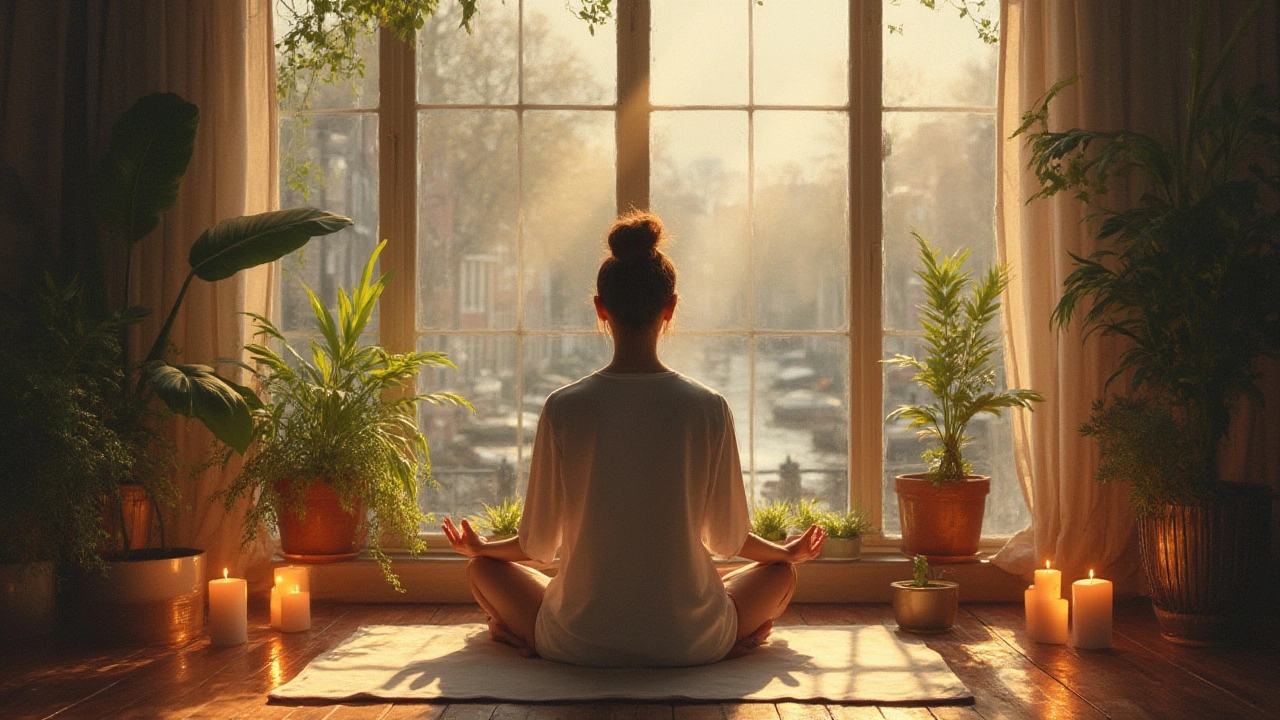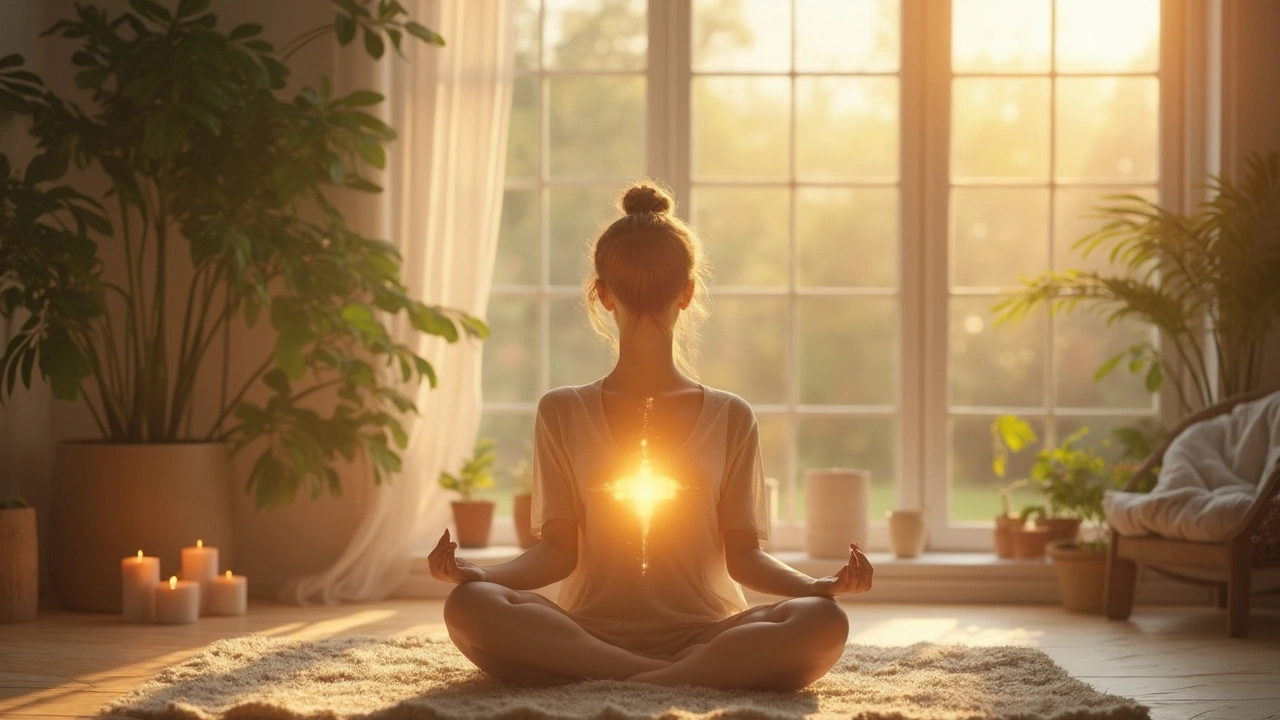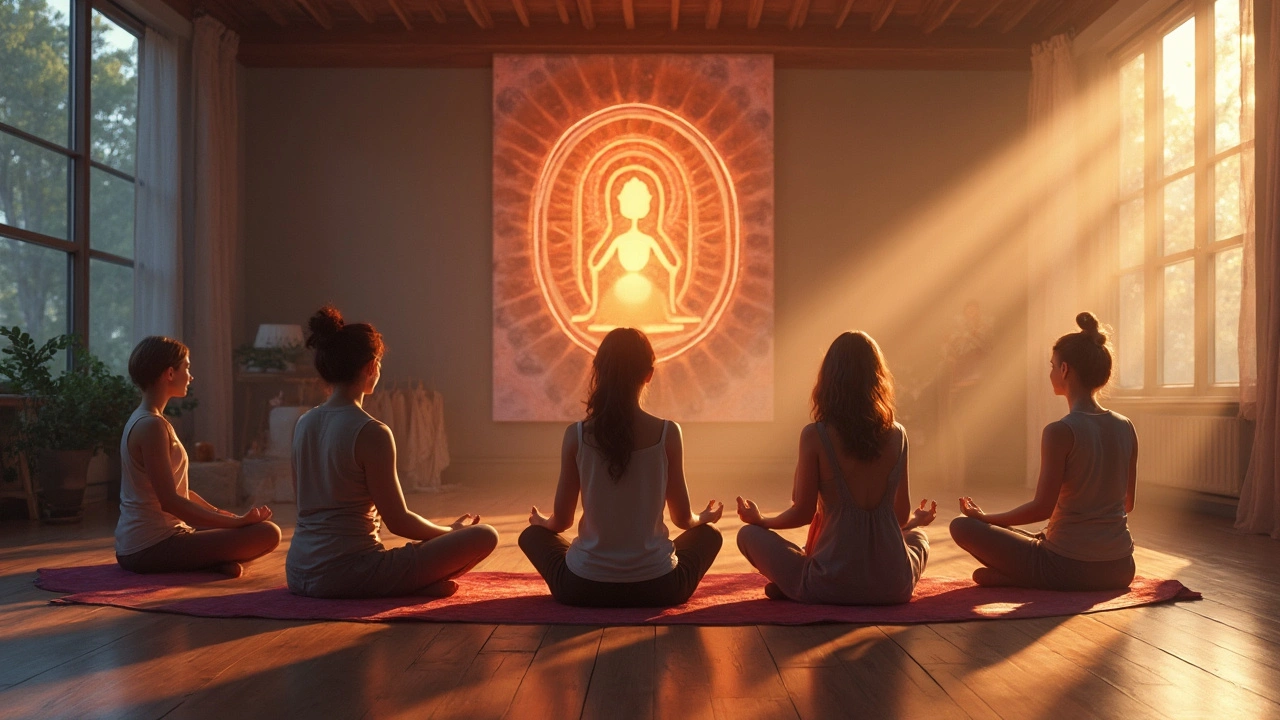Tantra and Conscious Living: Your Mindful Path to Wellness

Key Points: Tantra and Mindful Living Secrets
- Tantra is about more than intimacy—it's a full lifestyle that invites deep awareness and presence in everything you do.
- Conscious living simply means paying attention—truly noticing your thoughts, feelings, and actions in real time.
- Together, tantra and conscious living encourage mindful connections with yourself and others, leading to reduced stress, better focus, and greater happiness.
- You don’t need fancy tools or expensive retreats to get started; anyone can practice these ideas daily.
- Learning basic tantra breathwork and everyday mindfulness tips can quickly transform your routine into something more meaningful.
Direct Answer: What is Tantra and Conscious Living?
Tantra and conscious living go hand in hand—they're all about tuning in to the present moment, using your senses, and embracing life with open eyes and an open heart. Tantra isn’t just about sexuality like most tend to think; it’s an ancient system from India that mixes movement, breath, mindfulness, and connection—both with yourself and the world around you. Conscious living means you're present and aware of what’s happening inside you and outside in each moment, instead of running on autopilot. When you combine these, you get a powerful guide for mindful existence, one that promises not just better relationships but also a deeper sense of daily peace and joy.
Comprehensive Guide to Tantra and Conscious Living
Imagine living each day as if you’re tasting your favorite dessert for the very first time—that’s what tantra and conscious living are shooting for. Instead of sleepwalking through your routine, you wake up to every sound, scent, and feeling, both big and small. The word ‘tantra’ actually comes from the Sanskrit root meaning ‘to weave’—so it’s about weaving awareness right into the fabric of daily life. With roots reaching back more than 5,000 years, tantra was designed to help people break free from numbness and routine and finally wake up to their own bodies, minds, and relationships.
Think about the last time you drove home from work and barely remembered the drive—that’s the opposite of conscious living. Now picture yourself walking into sunlight, feeling the warmth on your skin, the breeze brushing your face, the ground solid under your feet. That kind of present-moment awareness is the heart of tantra too. And while pop culture loves to boil tantra down to steamy couples’ experiences, most tantra is solo work: breathing, moving, meditating, feeling. You can start anywhere—at home, waiting in line, even washing dishes. See what happens when you close your eyes and slowly inhale for four counts, then exhale for six. You’ll probably notice your mind calms instantly. That’s a taste of what tantra brings to the table.
A fun fact: neuroscientists have actually found that mindful, body-focused practices like tantric breathing can reduce cortisol (the stress hormone) in as little as three minutes. That’s less time than it takes to scroll through your notifications. This simple breath-mind awareness combo has drawn in everyone from tech CEOs looking for focus to new parents desperate for a sense of calm. By paying attention, slowing down, and using the senses, tantra and conscious living offer tools for handling tough emotions, boosting creativity, and making ordinary moments shine.
Of course, tantra isn’t about running away from tough stuff. It’s about feeling even the uncomfortable parts—stress, anger, confusion—and accepting them fully, so they can move through you. That’s a real power move in a world hooked on numbing and distraction. So whether you’re looking to spark a deeper connection with a partner or just hoping to feel more alive in your own skin, tantra and conscious living give practical, everyday steps for real change.

Definition and Context: What Makes Tantra and Conscious Living Different?
So what actually is tantra, and how does it fit in with conscious living? Picture this: regular mindfulness is like checking in with your thoughts every now and then. Tantra takes that up a notch. It’s fully embodied awareness, using not just thoughts but breath, movement, sound, and even touch. Tantric traditions go back thousands of years, with texts like the Vijnana Bhairava Tantra (written around the 9th century) listing over 100 different meditations—from humming softly to gazing gently at a candle flame. Scholars now see tantra as an advanced form of mindfulness—one that doesn’t just sit quietly on a cushion but comes alive in everyday moments, through all the senses.
Conscious living is basically modern tantra’s partner in crime. It’s living life on purpose, not by accident. Most people float through their day without really noticing how they move, eat, or talk to others. Conscious living means you actually taste your morning coffee, watch your thoughts drift in and out, and choose how to respond instead of automatically reacting. Big difference, right?
One way to spot the overlap: ever notice how some people can turn even the most boring chore, like folding laundry, into a source of calm and even joy? Chances are, they’re not secretly magicians. They’re just present for it, treating each movement as if it matters. That’s tantric awareness in action. And it’s contagious: families, partners, even pets seem to calm down when you’re truly there in the moment. Apparently, the simple act of sharing mindful touch or taking a few deep breaths together can lower everyone’s stress.
Going a layer deeper, tantra isn’t just for the individual—it’s a way of relating to everyone you meet. Imagine listening to a friend without rushing to think of what you’ll say next. Sitting in silence with your partner, hand in hand, eyes closed, simply breathing together. These moments can be deeply healing for both people, and neuroscience backs it up. Studies from UCLA’s Mindful Awareness Research Center report that shared presence—true eye contact and synchronized breathing—can trigger oxytocin (that’s the bonding hormone), helping people feel more connected and less lonely. Now that’s worth paying attention to.
Benefits of Tantra and Mindful Existence
Here’s the wild part: the rewards from tantra and conscious living aren’t just poetic—they’re measurable. For starters, regular mindful breathing can pull you out of fight-or-flight stress mode (your sympathetic nervous system goes quiet) and flip on your relaxation system instead. You might feel your pulse slow and your shoulders drop, even if you only did one round of breathwork while waiting for your laptop to reboot.
Tantra doesn’t stop at stress busting. It also helps with emotional resilience. You start to notice when anger, sadness, or anxiety show up—and instead of stuffing those emotions down, you meet them with curiosity, not judgment. That’s something top mental health therapists have been advising for years, and it’s baked right into tantra. You may find because you’re less reactive, relationships start to feel smoother. People even report heightened intuition and creativity, saying their best ideas come not from overthinking but from a relaxed, open focus that tantra cultivates.
Then there’s the buzz around better intimacy—not just in the bedroom, but in friendships, family, and even work. Tantra teaches how to hold space for honest communication, deep eye contact (called ‘eye gazing’ in tantric circles), and gentle, attentive touch. Couples who practice this regularly claim it helps them feel seen and understood, like they’re speaking a language no one else knows. On the solo side, people report feeling more at home in their own bodies—less self-conscious, more confident, and way more present.
If you want to dip your toe in, try this easy tantra-inspired exercise: each time you wash your hands today, do it slowly. Feel the water, the soap, the sensation of your skin. Take three long, steady breaths. Notice what thoughts pop up. You’ve just woven mindfulness right into a daily act. With regular practice, tiny habits like these start to add up. Reduced anxiety, greater patience, and even lower blood pressure can follow, according to research from Harvard Medical School in 2023. Those are results anyone can get behind.
Practical Tips: How to Start Your Tantra and Conscious Living Journey
Diving into tantra or conscious living doesn’t mean you need to sign up for a week-long retreat or chant in Sanskrit (unless you want to, of course). You can start right where you are—with the body, the breath, the senses you’ve got. Here are a few jumpstart ideas to weave awareness throughout your day:
- Start small with mindful breathing. Whenever you catch yourself zoning out, pause. Feel the air moving in through your nose, down to your belly, and then slowly out. Even 3 breaths can hit reset on your mood.
- Use your senses fully. Next time you eat, really taste each bite, savor the smells, feel the texture. This simple swap changes any meal into a mini meditation.
- Practice active listening. When someone talks to you, focus completely. Listen not just to the words but the feelings underneath. This tiny shift can work wonders in relationships.
- Body scan—when you wake up, run your awareness from toe to crown. Can you sense each part? Try it before bed too. It’s a fast way to feel grounded and present.
- Set mini-intentions for your day. Try something like, “Today, I’ll notice the color green wherever I see it,” or “I’ll feel gratitude every time I wash my hands.”
Feeling adventurous? Try a short guided tantra meditation. Google ‘tantric breathwork’ or check out apps that offer free introductions. Or experiment with mirror gazing—look softly into your own eyes for a few minutes and see what comes up. Yes, it might feel odd at first, but that’s totally normal. The goal isn’t perfection, just deeper presence. Over time, these rituals become as natural as brushing your teeth.
Got a partner? Try syncing your breaths for a minute or two—sit facing each other and match inhalations and exhalations. Couples worldwide rave about how this simple trick dissolves tension and brings a spark of connection, even on tough days.
Remember, tantra and conscious living aren’t about escaping daily life. They help you face it with open eyes. So the next time stress hits, don’t push it away. Feel it, breathe through it, and let the moment pass. Before long, you’ll notice something cool: life feels less like a blur and more like a series of delicious, vivid memories in real time.


